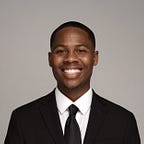How Police Killings Criminalized Black Male Youth
An unjust status quo Black men and boys.
The names Tamir Rice, Michael Brown, and Jordan Edwards alone symbolize the issue of police violence against Black men and boys. “I don’t wanna die too young” were the words 19-year-old Christian Taylor tweeted in 2015 before he was senselessly murdered a week later by rookie police officer Brad Miller. Questions continue to be raised about the relationship officers have with the people they are policing, especially in Black communities.
Today, Black boys as young as ten years old are viewed as not innocent and older, perceived as guilty and violent than their White peers, and face unbearable rates of police brutality. They are 2.5 times more likely to die during police encounters than White men and boys. On the other hand, despite the decline in youth incarceration, Black youth are four times more likely to be held in juvenile facilities than white peers. For the Black men and boys who died at the hands of police officers, public fear and the height of justice were little to none.
Society views Black life as less valuable and consistently perpetuates criminal connotations in the form of insults, suggesting that Black children are everything but children. Because 19-year-old Christian Taylor was Black, comments such as “dumb” and “pot-smoker” vilified him even in death, dehumanizing his character because of his skin color. The language used to describe Christian Taylor even in death has been used against Black boys who do not live to the standard of White Americans.
Unlike prominent civil rights leaders like Malcolm X, Medgar Evars, and Dr. Martin Luther King Jr, whose character was demonized while alive and rebranded into a critical historical moment. Black boys are vilified, dehumanized, and trashed while active and even in death. For the 2017 murder of 15-year-old Jordan Edwards, police officer Roy Oliver fired into a car of unarmed Black teenagers. Fatally shooting Jordan Edwards. While police are rarely convicted of shooting Black men, this officer was found guilty of the shooting death of 15-year-old Jordan.
Negative stereotypes regarding Black male youth continue to spread despite the truth. Mainstream media plays a vital role in shaping perceptions of how society sees the Black male youth. For example, 17-year-old Antwon Rose Jr was shot three times by officer Michael Rosfeld and was taken to the hospital to be later pronounced dead. While police officer Michael Rosfeld was placed on administrative duty with efforts of the Pittsburgh police department to perform an independent investigation, racial inequality continues to persist in the wake of police interactions with Black males.
Camille Charles, director for the center of African Studies at the University of Pennsylvania, mentions, “Criminalization extends beyond the police; it extends beyond law enforcement. This is central to our history; we have always criminalized Black people and demonized Black people.” The relationship between the police and Black men and boys has always been rife with violence and aggression.
Through lived experiences, Black boys carry the burden of accepting the responsibility of their actions, while white boys benefit from the assumption. The Columbine school shooting, Charleston church shooting, Stoneman Douglas high school shooting, and other unfortunate events portrayed the infantilization of White men. The implicit dehumanization tactics police officers use to inflict their power on Black men and boys become routine, as Black men and boys are killed more often.
Examining patterns of police treatment and other factors contributing to the mistreatment and criminalization of Black men and boys highlights a prominent issue. Being perceived as older and less innocent than their white peers and being held responsible for our actions marginalizes strong bias toward Black boys. Resorting to measures dealing with Black boys has become a hot-button issue. Though police officers perpetuate mistreatment, other factors, including the school-to-prison pipeline, juvenile courts, and other environmental factors, take a toll on the criminalization of Black boys.
Tamir Rice was only 12-years-old when he was killed; the police officer who killed him said that he looked like he was in his 20s. The consistent theme of looking at Black boys as older than their age plagues all Black boys across the United States. Appearance in the Washington Post about 12-year-old Tamir’s death stated that he was “big for his age,” and his rather large jacket and pants made police believe he was older than the child he was. This experience alone is dehumanizing for Black men and boys, considering White men get passes for things that no one would ever forgive a Black boy for doing.
Julian Harper, a former NYPD police lieutenant and cofounder of “100 Blacks in law enforcement who care,” stated, “We are having this conversation now, and we will have this conversation again; I think the response by law enforcement is failing the Black community.”
Even some who say they oppose the criminalization of Black boys compare instances and cases White men and boys engage themselves with no consequences. Unlike 12-year-old Tamir, who was Black, 17-year-old Kyle Rittenhouse, White, was armed with a Smith and Wesson M&P 15 rifle and killed two protestors in Kenosha, Wisconsin, during a Black Lives Matter protest. Supporters of the Republican party and Rittenhouse say he acted in self-defense and defended his innocence as a child. But would Americans treat Black boys and teens in situations such as Rittenhouse so forgivingly?
But the story remains the same; an officer shoots a Black boy, and justifications behind it, such as he looked older, was, looked aggressive, and somewhat threatening, show a sign of transparency and consistent behavior towards the mistreatment of Black men and boys. The political rhetoric of the issue is often overlooked, as Black life is perceived to be not as valuable as White life. Caught in the crossfire, Black men and boys bear the brunt of police violence. Despite efforts to end it, conversations and awareness today could alleviate the pain inflicted on future generations of Black men and boys.
